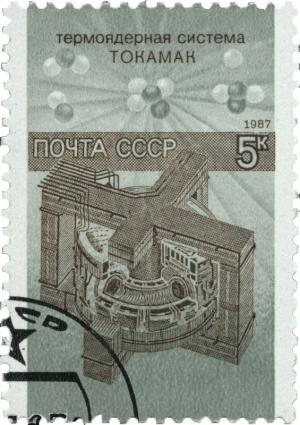The second life of Tokamak T-15
The Soviet tokamak T-15 was a promising machine. Built at about the same time (1983-1988) as Tore Supra in Cadarache, it was the first installation to use superconducting niobium-tin conductors. Fifteen years after "economic difficulties" stopped the project's experiments, the machine's 24 Nb3Sn toroidal field coils are still the largest in the world.
T-15 produced first plasma in 1988, demonstrated the steady-state regime of its magnetic system operation, carried out about a hundred shots but never operated at full capacity. "We would have needed some $12 million to operate it annually," remember both Englen Azizov, the Director of the Moscow Institute of Tokamak Physics, and Oleg Filatov, the Director of the Efremov Institute in Saint Petersburg. "We never had enough money to start real operations ..." The machine, as a consequence, was shut down in 1995.
Now, fifteen years later, T-15 is back on stage for a spectacular upgrade aiming at ambitious results.
T-15 MD, "MD" for Modified Divertor, will use most of the original T-15's "existing infrastructure." Systems such as power, vacuum, heating and diagnostics, which account for 80 percent of the total cost of a tokamak, will be reused in the new installation.
T-15 MD will eventually trade T-15's original "circular limiter"—like the one in Tore Supra—for a graphite divertor designed to withstand heat loads in the range of 20 MW/m², comparable to that of the ITER environment. Other upgrades include modernization of the heating and current drive systems that will enable a significant increase of heating power (up to 20 MW) and pulse durations of up to 1,000 seconds.
Final design of the new machine should be complete by 2011 and by 2014 T-15 MD should produce first plasma. Experiments in the more "ITER-like" configuration could begin in 2018. The upgraded Russian tokamak will extend the operational domain of "ITER-complementary machines" and contribute to the determination of the optimal parameters required by future reactors.
Hybrid concepts are among the directions T-15 MD could explore. Hybrids proponents claim they have a much better use for the highly energetic fusion neutrons than just having them "heat" the water that circulates inside the first wall's blanket. They want to use their energy to induce fission reactions in a fertile blanket of natural uranium or thorium. This is what both Azizov and Filatov mean when they say: "Fusion can help fission."
In this perspective—which is heresy for many fusion purists—T-15 MD would be a "hydrogen prototype" that would confirm some of the physics needed to launch a "very preliminary" demonstrator for a hybrid reactor. Conceptual design for this project, already named TIN-1, could begin as early as 2011.
"Whatever direction we take," say the two Russian scientists, "we need ITER to succeed." While T-15 MD will have a full-time job in support of ITER, it will also do a little work on the side for the hybrid option being contemplated by some countries.



